C. F. Martin Style 23 & 24 Guitars
Martin Style 23 and 24 guitars are two of the earliest styles, and among the most interesting Martins, with quite a bit of individual variation between individual guitars and in different years.
The Style 23 was produced as a size 2 1/2 guitar selling for $23, while the Style 24 was a size 2 1/2 guitar* selling for $24.
These two styles can generally be distinguished by the "side filets", or light lines on the sides of the guitar adjacent to the binding.
A Martin with side filets and fancy marquetry on the top border is a style 24, while the style 23 will have a border composed of straight lines.
The actual design of the marquetry on the rosette and top border of early Martin guitars can vary greatly, and says little in determining the style of the guitar. Style 23 and 24 Martins are among the most interesting because of the great variety of designs used for rosettes and top borders.
*Gruhn (p.440) states that the Style 24 was "offered in size 2." My two Style 23 examples measure 11 3/4". My Style 24 examples measure 11 5/8" to 11 3/4". Size 2 1/2 is said to measure 11 5/8" while the size 2 is said to measure 12".

C. F. Martin Style 23 Guitar
C. F. Martin 1850's Size 2 Style 23 Guitar
Early Martin 2-23, with red spruce top, Brazilian rosewood back and sides, ebony fingerboard and pyramid style bridge. This particual Style 23 Martin has a "Shark's Tooth" design on a pale green field in the rosette. This instrument is fan bracedand has a cedar neck and slotted headstock with Jerome tuners. The Jerome tuners are common on better Martin guitars of the mid nineteenth century.
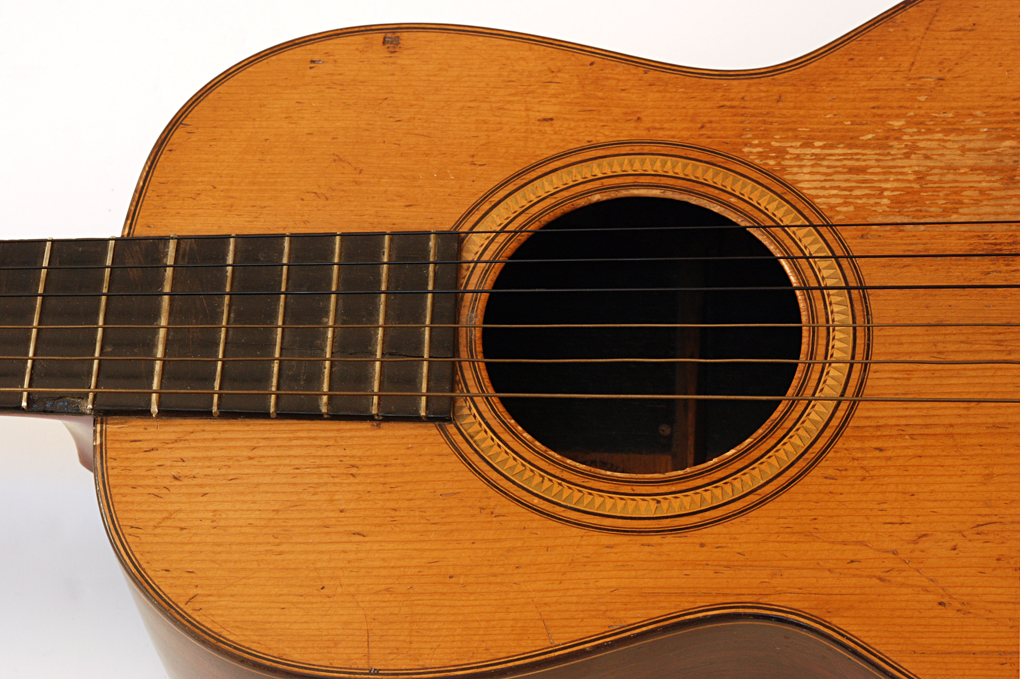

The diamond pattern on the back strip is also a common feature of mid nineteenth century Martins.

The diamond back strip is sometimes accompanied by a diamond end strip, while sometimes one of several mosaic patters was used, such as on this guitar.

C. F. Martin Style 24 Guitar

C.F. Martin c1860 Size 2 1/2 Style 24
This beautiful and rare Style 24 is illustrated on the dust jacket and in 5 color plates in the book "C. F. Martin & His Guitars" by Philip Gura.
The back and sides of guitar are French Polished Brazilian Rosewood, with the back veneered over red spruce, a common practice on finer Martins in the mid nineteenth century.
The top is red spruce, and the fingerboard is of simple ebony, without inlays, as was customary at the time. As on most finer Martins of the time, Jerome tuners were used. The nut, saddle, end pin, and binding are all made of ivory. A wood marquetry border is inlaid on the top of the guitar and into the rosette. Abalone is inlaid into the ivory bridge pins and end pin. The top and back body bindings are of rosewood. A style 27 and 28 and above would have genuine ivory bindings. The backstrip is made of beautiful wood marquetry in an arrowhead design. A unique wood inlay is used for the end strip.
The guitar is made with a dove tail joined headstock and neck with volute. This guitar is an early example with scalloped X style braces.
Serial numbers were not given to Martin guitars until 1898. The date is handwrtitten on the underside of the top of earlier guitars, but not until the 1870's. "C. F. Martin New York" is stamped inside the guitar upside down on the neck block, and on the center strip inside the back. "C. F. Martin New York" is stamped on the back of the guitar near the heel. The guitar comes with it's original wooden "Coffin" style case.
Specifications:
MARTIN, 2-1/2 -24, c.1860, rosewood veneered back, rosewood bindings with colored wood marquetry around top & soundhole, X-braced, Jerome tuners with design-stamped brass plates, completely original, excellent but for a glued center seam below the bridge & a repaired crack from bridge to binding, original black wood coffin case with red felt lining (latches replaced), an early X-braced Civil War period Martin, very playable & in a surprizingly pure state of preservation. This guitar is illustrated on the dust jacket & in 5 color plates of C. F. Martin & His Guitars by Philip Gura.,
Ebony overlay on solid peghead
Jerome tuners
Horn strap button with abalone center
Two piece cedar neck with decorative diamond design
12 fret neck
Elephant Ivory nut
Unbound ebony fretboard
Bar frets
Elephant Ivory heel cap
Highly figural, 1870's quality, bookmatched solid Brazilian Rosewood sides and veneered back
Solid Red Spruce top
Soundhole rosette with 5-9-5 pattern (black & white woods, the wider 2 rings in the center are Elephant Ivory)
Ebony pyramid bridge
Elephant Ivory saddle
Elephant Ivory endpins with abalone centers (not standard on style 26)
Back purfling gold wood inlay next to binding (standard was white)
Marquetry on back center "multicolored long arrowhead"
French polish finish
X-bracing
Back of peghead stamped "C.F. Martin- New York"
Neck block stamped (upsidedown) "C.F. Martin - New York"
Center strip in soundhole stamped "C.F. Martin - New York"
No Serial number
No date in pencil under top (as done in the 1880's-1890's)
Black coffin case.



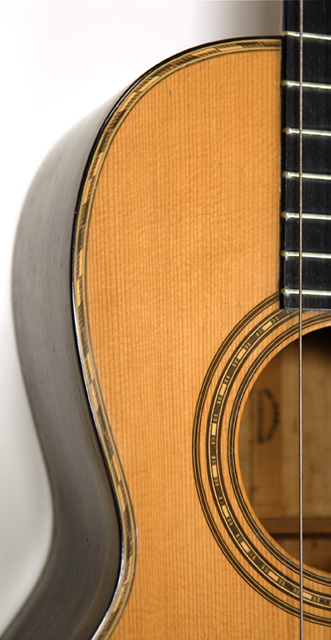
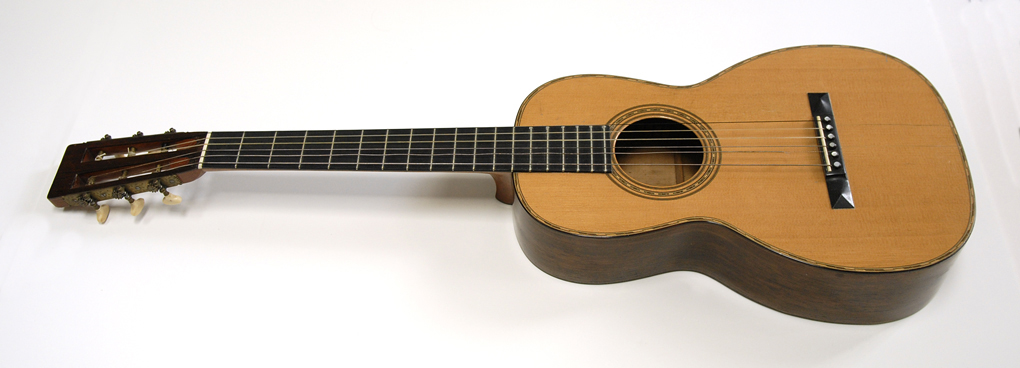

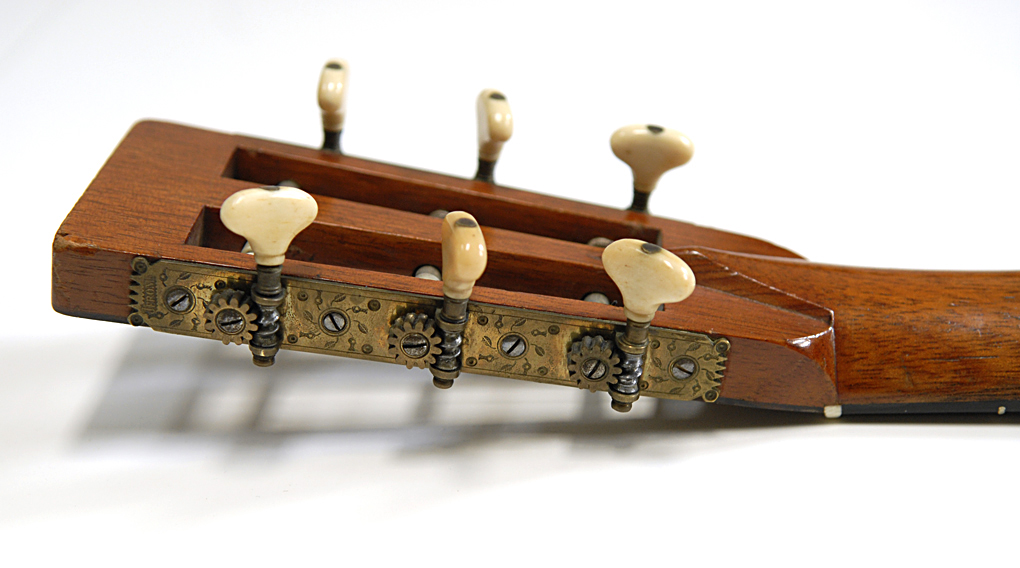





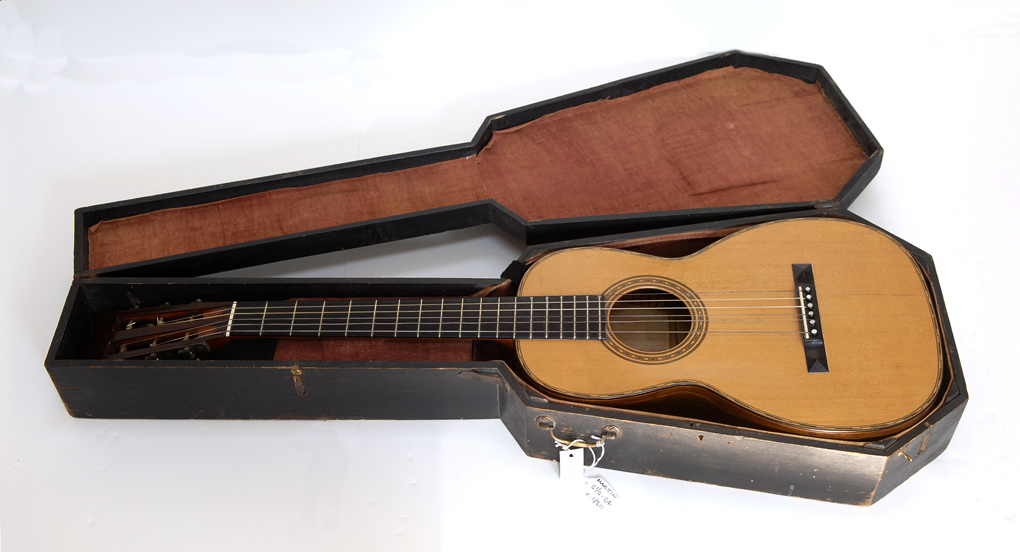
C.F. Martin c. 1850 3-24

C.F. Martin c1892 Size 2 Style 24

C.F. Martin c1850 Size 2 1/2 Style 24

This beautiful a Martin 2 1/2 - 24, with red spruce top, spruce lined rosewood back and sides, ebony fingerboard and pyramid scooped back style bridge makes for an interesting companion for the 2-24 illustrated above. This example has the black ebonized neck with "ice cream cone" heel usually seen on earlier Martins with fan bracing, yet both of these two examples have X bracing.
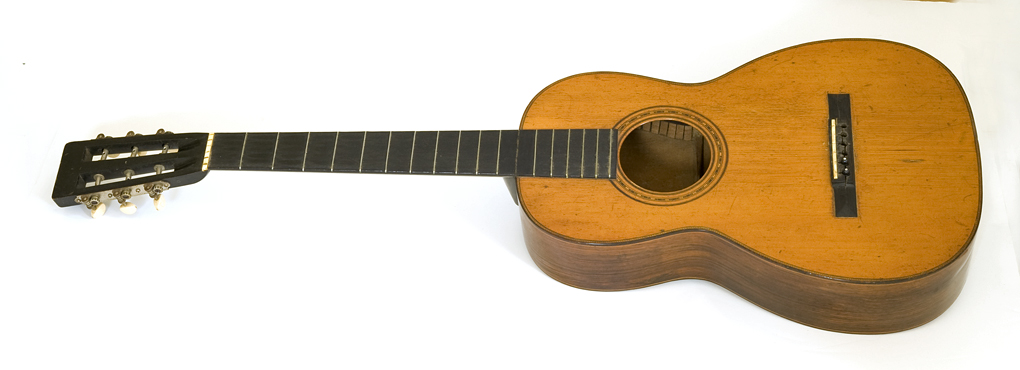






Both of these guitars have the distinctive early pyramid style bridge with the "scooped" back.

C.F. Martin 1888 Size 2 1/2 Style 24
The 2 1/2 - 24 was made through the 1880's continuing features seen on the earlier models.

An arrowhead back strip such as this was typically seen on a Style 24:
c 1860 Martin 2 1/2 - 24

The Style 23 was an early style, with the diamond back strips typical of early Martins, as was true of the earliest of the Style 24's.
c. 1855 Martin 2-23

c. 1855 Martin 2-23

The Styles 23 and 24 were also both early enough to have the end strips typical of early Martins.
c. 1855 Martin 2-23

c 1860 Martin 2 1/2 - 24

The style 24 was the one model to continue having marquetry end strips into the 1880's, several decades after they were discontinued on other models.

Gura



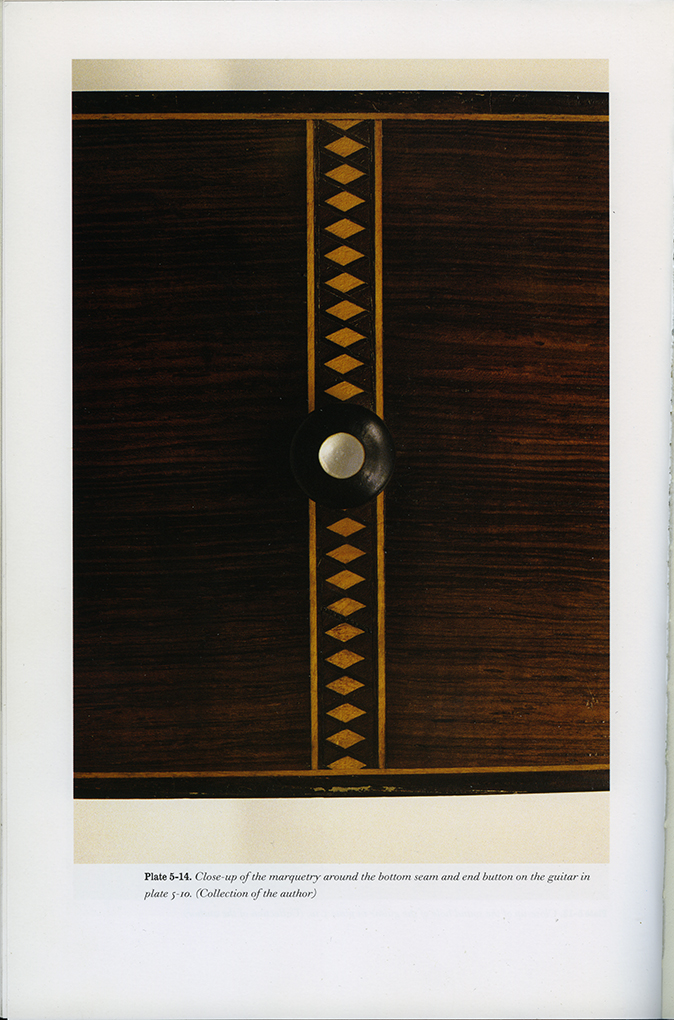
earlymartin.com
To See Robert's Corwin's Classic Photography of Folk and Roots Musicians, visit:
For Information on Photography for
Exhibition, Publication, CD's, Promotion, Web Pages, Tour Books,
to Purchase Photographic Prints, or
If You Have Questions About An Early Martin Guitar:
e-mail: Robert Corwinentire site copyright ©1998 through 2012 Robert Corwin/Photo-Arts. All rights reserved.